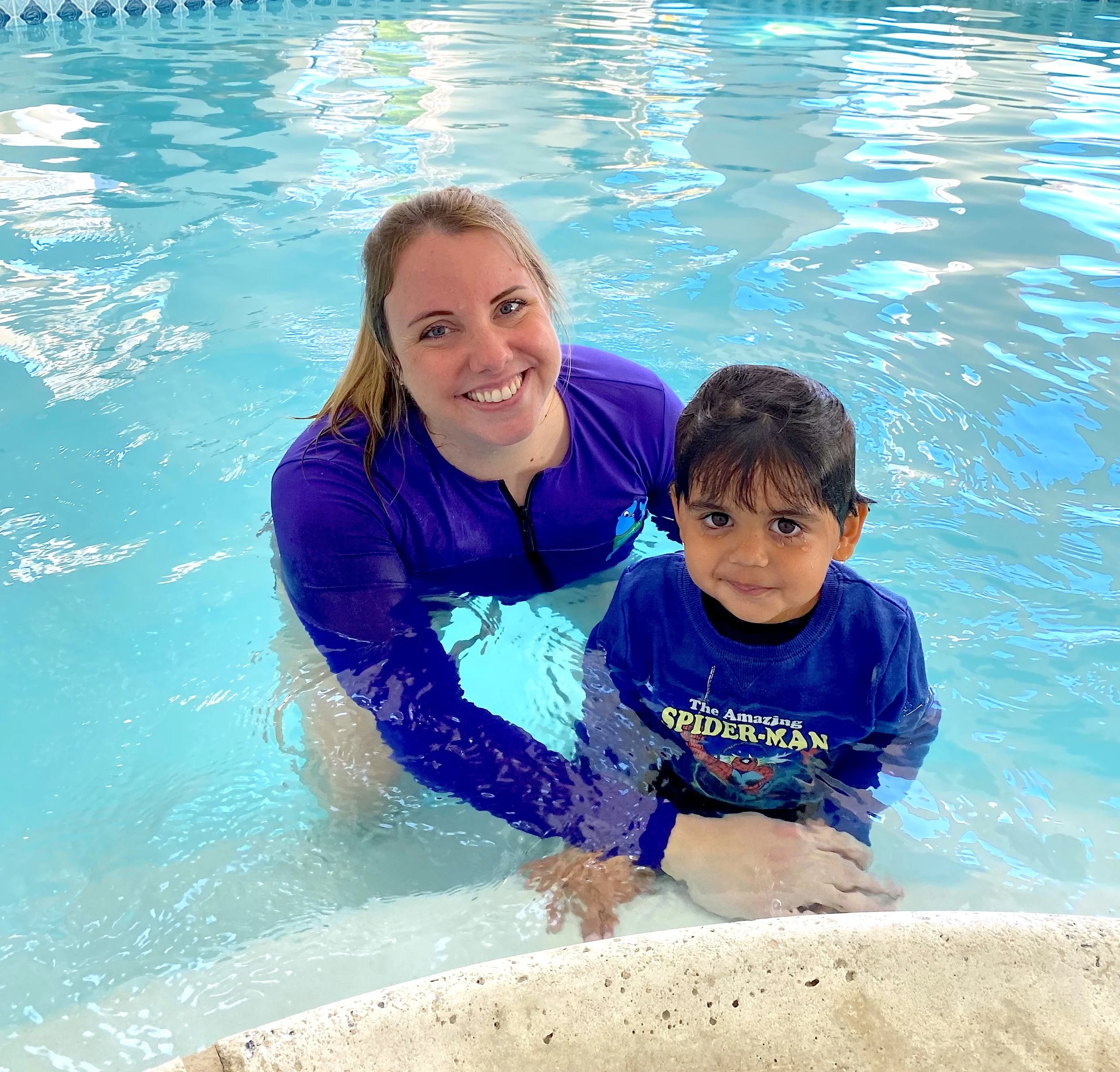ISR Lesson Structure
All ISR lessons are:
Personalized
One-on-one
10-minutes
Held five days a week, from Monday through Friday, spanning approximately 6-8 weeks.
Why are the lessons so short and 5 days a week?
Research shows that short, more frequent lessons result in higher retention. Additionally, most children have fairly short attention spans and will not be able to focus on the task for longer. A third reason is that, though the pool temperature warm, the temperature is still lower than your child’s body temperature. Lessons are work and your child will lose body heat which can affect their learning.
What your child will learn
Younger children will be taught to rollback to float, learning from various presentations how to surface the water, rotate onto their back, and float independently.
Older children will learn the swim-float-swim sequence, moving at a developmentally appropriate level through the water, rotating onto their back to breathe and float, and then flipping over to swim again.
All ages complete at least two guided lessons in clothes with their instructor to ensure they know how to respond if they were ever to fall in the pool while clothed.*
*We will work with your child until they are independently swimming and floating and can navigate clothes lessons safely. For most children, this happens within 6 weeks. We will not do lessons in clothing if a child is not ready for it.
Lesson Structure FAQs
-
The reason for this is multifaceted. First, repetition and consistency are crucial elements of learning for young children. Research shows that short, more frequent lessons result in higher retention. Second, most children have fairly short attention spans and will not be able to focus on the task for longer and we want to take advantage of the best time for learning. A third reason is that, though the pool temperature is maintained at 78-88 degrees, the temperature is still lower than your child’s body temperature. Lessons are work and therefore will also be losing body heat. Instructors check students regularly for temperature fatigue since this is an indicator of physical fatigue.
-
The 4-8 weeks is an estimate that is based on the average time in which it takes most children to learn these survival skills. Every child is unique and ISR’s Self-Rescue program is specifically designed based on your child’s strengths and needs. It is important to realize that this is an average which means that some children will finish more quickly while others will need more practice. ISR is dedicated to safety and, therefore, we want to provide your child with the time and best opportunity to become proficient in their survival skills. We will always honor your child’s needs.
Further the AAP states, “There is tremendous variability among swim lessons, and not every program will be right for each child. Parents and caregivers should investigate options for swim lessons in their community before enrollment to make sure that the program meets their needs and the needs of the child. High-quality swim lessons provide more experiential training, including swimming in clothes, in life jackets, falling in, and practicing self-rescue.
-
Like any physical skill, children don’t “forget” the skills, but will need to adjust their skills to account for their physical growth. In addition, children will explore and may pick up bad habits watching other children or with interference like floating in a bathtub or playing on the steps. As your child goes through lessons, you will begin to understand, through communication with your Instructor, what activities may interfere with their learned ISR Self-Rescue skills. Contacting and/or returning to your Instructor promptly is imperative to maintaining effective habits.
-
Because 86% of children who fall in the water do so fully clothed, we want our students to have experience with such a situation. If a child has experienced the sensations of being in the water in clothing prior to an emergency situation, they are less likely to experience panic and be able to focus on the task at hand. If you have ever jumped in the water with clothes on, then you know that there is a significant difference in weight and feel with clothes as opposed to a bathing suit.
-
No. Every child can learn. It is our job to find the best way to communicate the information so that it makes sense to the child. We set your child up to be successful every time. We start at your child’s skill level and set them up for success in every lesson.



